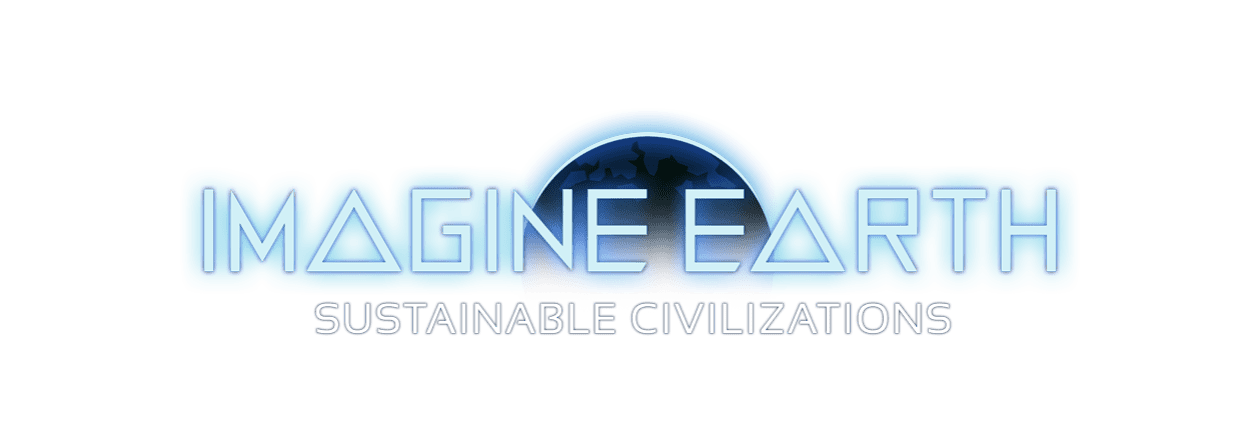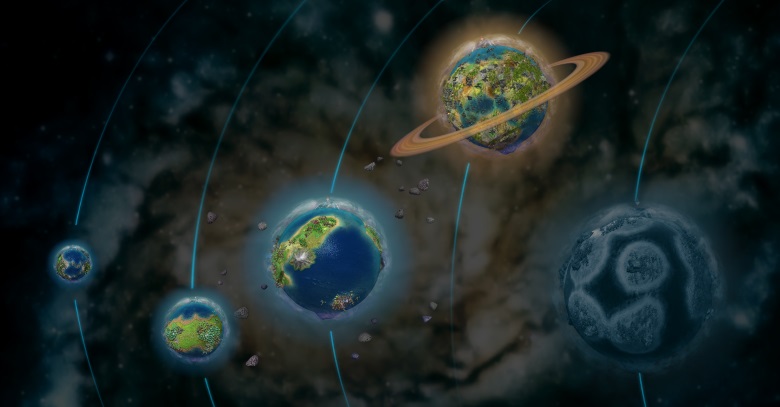After releasing Rounos we already received some very intense feedback (which is great!) and would like to share some of the results and lessons we learned.
1. “Imagine Earth is a hard game to master”
We had to learn that mastering Imagine Earth isn’t as easy as we thought – obviously it’s easy to play your own game since you know everything about it, but this doesn’t mean that everyone else does, too. We received a few messages by people who were really frustrated, because they couldn’t find a way to win Lorian or Rounos and at the same time loved Imagine Earth so much they had to try again and again.
We looked deeper into this and found two big problems we will address with the next update:
- The balancing of Imagine Earth currently IS hard!
A solution would be to make Imagine Earth easier, but we know that there are some people out there (including me) that love to beat a really hard game.
So we decided to add 3 levels of difficulty that will vary consumption, production and pollution of all buildings and reduce or increase the probability of events like incidents, twisters, etc. - There is no way to find out what’s going on in the global simulation.
This is why we are currently working on a statistic that shows resource production and consumption on a global scale for the different resource types and buildings. This will also make it a lot easier to balance the game.
2. “The art style of the characters is a bit creepy”
How dare you! They are funny and lovely, not creepy… maybe a bit to abstract ;D…
Ok, this is a matter of taste, but some of you are right say that they where a bit too much for them. Because we want to find a look that suits as many people as possible we had a second look at different art styles and decided to keep the comic look, because we love the sympathy that comes with it. What we are changing is that we will add some noses and real eyes so everyone looks more human on Iagine Earth.
Here is a first glimpse at Linda and Dr. Zweistein:
3. “The planets are too small”
The first two planets – Tuto and Joma – are pretty small. Lorian and Rounos are mush bigger, but this is obviously not visible during the first few hours.
To make the different planet sizes more clear from the beginning, we will add a new campaign menu that shows all planets with their relative sizes.
We like to know what you think about these three aspects.
Please send an email to martin@imagineearth.info or leave a comment under this blogpost if you like.





I, for one, do not actually find the difficulty an issue at all. It seems to be quite well balanced as it is to me. Some bigger issues are:
1) Incoherent directions/bugs. I’ll give two examples:
a) Directions: an example of this is on Rounos. We are told to build a research district next to the village in order to discover more about them / make contact / etc. However, this triggers no additional dialogue until the boss comes. The natives just start setting fire to it. During my first playthrough, it was at least 30 min to 1 hr before I built this district and was just constantly putting out fires there before there was any progress in the storyline that told me to build the district.
b) Minor programming logic bugs: an example is the research stars. This system is slightly broken right now. The way it is supposed to work is that you earn so many stars maximum per level for different tasks, which can then be applied fresh on any new level you start, and presumably you shouldn’t be able to earn multiple stars for the same task. However, something I experienced is that I could earn missing stars for a world just by returning to the world and completing the same tasks. In other words, it seems as though the earned stars are only linked to the tasks while you are still on that world and that this data is not linked once you leave the world, enabling one to earn the maximum stars for a given planet (I haven’t tested this out fully, but this is my suspicion) just by completing the same easier research star tasks over and over.
2) The research coin system. On my first Rounos playthrough, I found myself hoarding these coins because I didn’t have any clue how many I would ultimately receive or when I would receive them. Thus, I wasn’t able to invest in marginally useful things like upgrades, park districts, etc. because I was afraid that in the future I would need a coin for a research buoy or something absolutely necessary to advance the storyline/scenario and I wouldn’t be able to attain one. Additionally, the current coin system makes it hard to justify to yourself investing in something like coal plant or oil platform upgrades (or even the facilities themselves) at the beginning stage of a game since you could never receive that coin back once these dirtier forms of power need to be dismantled later and replaced with things like solar, wind, and nuclear in order to achieve climate stability. The result is that a lot of interesting aspects of the game buildings are just never able to be explored. I’d suggest making all building research upgrades cash-only, or possibly removing some of the element of user choice and making new buildings and upgrades (the ones possible based on your research stars) unlocked automatically at appropriate times in the scenario.
3) The ability to wreck yourself late in the scenario by doing something you didn’t know was a bad idea early on. For example, selling the big crystals on Rounos prior to being given the mission to earn an infinitely more valuable research star with them. Also, having the scenario end automatically at a certain population limit with no way to opt to continue trying to fulfill the bonus research star objective is a bit problematic. Perhaps there could be a button to end the mission that appears only when the option is available. Another example of this would be incorrectly investing research stars (see above). The final example I can think of is landing a new capital district in place that turns out to be really bad later on because you need way more population capacity, or, alternatively, choosing not to land your ship in a place with low pop capacity but that would give you access to something new and good (e.g. land to build forests) because you’re worried you will absolutely need to population capacity in the future. Perhaps the answer to this is to make every capital district able to be turned mobile again and relocated at great expense?
4) Some performance-enhancing options would be nice. The first two missions worked outstanding for me. Lorian got a little slowed down, but not awful. By the start of Rounos, the first capital district landing takes something like 60 seconds. It would be nice to be able to cut some of the superficial graphical quality in order to keep the fun of the underlying game.